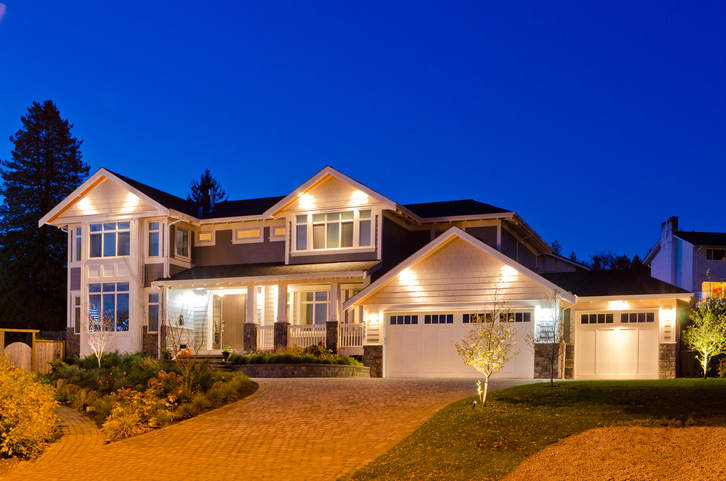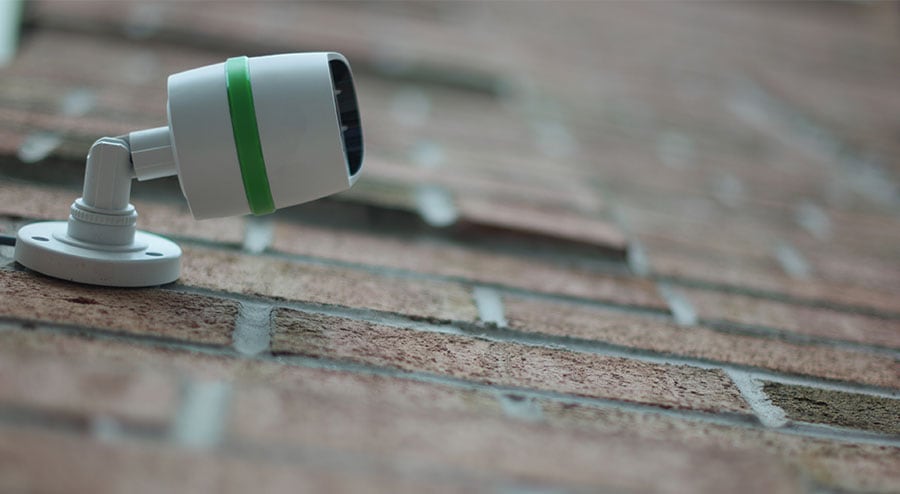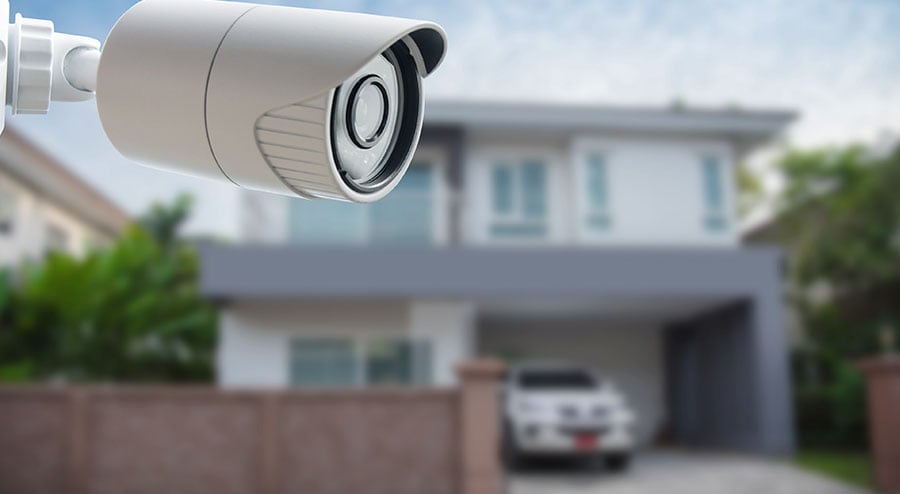Security lighting serves as a vital component in safeguarding your home and enhancing overall safety. By strategically illuminating your home’s exterior, security lighting acts as a deterrent to intruders, helps prevent accidents, and provides a sense of security for residents and visitors alike. This article explores the importance of security lighting, different types of fixtures available, placement strategies, integration with other security systems, and maintenance tips, guiding you toward creating an effective and well-lit environment that prioritizes safety and peace of mind.

Overview Of Security Lighting
Security lighting refers to the use of strategically placed lights around the exterior of a home to enhance safety and deter potential intruders. The primary purpose of security lighting is to provide visibility and illuminate the surroundings, making it difficult for trespassers to approach unnoticed.
Types Of Security Lighting For Homes
Motion Sensor Lights
Motion sensor lights are designed to activate when they detect movement within their range. They remain off when there is no motion but instantly illuminate the area when someone approaches. This type of lighting is highly effective for deterring intruders and conserving energy.
The sudden burst of light when triggered can startle potential intruders and serve as an effective deterrent. However, motion sensor lights can have their drawbacks. False triggers can occur due to animals, wind-blown objects, or passing vehicles, potentially causing unnecessary activations. Additionally, their coverage area is limited to the range of the sensor, so it’s important to consider the placement and adjust the sensitivity when necessary.
Floodlights
Floodlights emit a broad, intense beam of light, covering a large area. They are commonly used for illuminating wide outdoor spaces, such as yards or driveways. Floodlights can be manually operated or equipped with motion sensors, providing both continuous illumination and triggered activation.
They can provide a strong deterrent and ensure excellent visibility. However, floodlights consume more energy compared to other types of security lighting, resulting in higher electricity costs. They can also contribute to light pollution if not properly directed or shielded, so it’s crucial to consider the impact on neighbors and the surrounding environment.
LED Lights
LED (Light Emitting Diode) lights have gained popularity in recent years due to their energy efficiency and longevity. They consume significantly less energy compared to traditional incandescent or fluorescent lights. LED security lights are available in various styles, including floodlights, spotlights, and pathway lights.
LED security lights are available in various styles and brightness levels, providing flexibility in design and functionality. However, the initial cost of LED lights may be higher compared to other options, and over time, the light output may degrade, potentially affecting their overall effectiveness.
Solar-Powered Security Lights
Solar-powered security lights harness energy from the sun to operate. They have built-in solar panels that charge during the day and power the lights during the night. Solar-powered lights are environmentally friendly and do not require complex wiring, making them easy to install in remote areas or places with limited access to electricity.
Solar-powered lights are suitable for remote areas or places with limited access to electricity. However, their performance is reliant on adequate sunlight for charging, so they may have limited brightness or runtime during overcast or winter seasons. Additionally, the initial cost of solar-powered lights can be higher than traditional lighting options.
Strategically Placing Security Lighting
Strategically placing security lighting around the exterior of your home is a key component of an effective home security system. While installing security lights may seem straightforward, taking a thoughtful approach to their placement can significantly enhance their effectiveness in deterring intruders and creating a safer environment.
Importance Of Placement Of Security Lighting
Strategic placement of security lighting is crucial to maximize its effectiveness in deterring intruders and enhancing safety. By placing the lights strategically, you ensure that the entire perimeter of your home is well-lit, minimizing potential blind spots and areas of vulnerability. Strategic placement also helps to prevent false alarms triggered by passing cars, animals, or other irrelevant movements. Properly positioned security lighting creates a sense of visibility and discourages unwanted activities around your property.
Placement Around Windows, Entry Points, And Dark Areas
When it comes to placing security lighting, there are several key areas to consider. Start by focusing on windows and entry points, as these are common targets for potential intruders. Install lights near windows and doors to illuminate these areas, making it more challenging for burglars to approach undetected. Additionally, pay attention to dark areas such as pathways, driveways, and secluded corners of your property. By illuminating these spaces, you eliminate potential hiding spots and increase overall visibility.
Security Lighting And Home Automation Systems
Integrating security lighting with a home automation system provides additional convenience, control, and security. With a home automation system, you can schedule the activation and deactivation of security lights according to your preferences or create customized lighting scenes. This not only enhances the energy efficiency of your lighting system but also gives the impression of an occupied home when you’re away, deterring potential intruders. Home automation systems also enable remote control of your security lights, allowing you to adjust settings or activate lights even when you’re not at home.
Planning Out Your Security Lighting
Designing a comprehensive outdoor lighting plan that incorporates security lighting requires careful consideration and planning. There are many things to consider when choosing the placement of your security lighting.
First, assess your property by taking a walk around during the evening hours. Identify areas that are poorly lit or potential blind spots where intruders could go unnoticed. Pay attention to specific features, such as landscaping elements, architectural structures, or valuable assets that may require targeted lighting.
Focus on layering your lighting. Combine different types of lighting, including security lighting, accent lighting, and pathway lighting, to create a layered effect. This not only enhances the aesthetic appeal of your outdoor space but also provides optimal coverage for security purposes.
When selecting lighting fixtures, choose ones that are designed for outdoor use and can withstand different weather conditions. Consider factors such as durability, weather resistance, and appropriate brightness levels for different areas of your property.
Consider the direction of the light. Position your lights in a way that directs the light downward, minimizing excessive glare and preventing light pollution. This ensures that the focus is on illuminating the intended areas while maintaining a comfortable and visually appealing environment.
Incorporate timers or motion sensors into your security lighting system. Timers allow you to automate the activation and deactivation of your lights, creating the illusion of an occupied home even when you’re away. Motion sensors, on the other hand, provide an element of surprise for potential intruders, as the lights will suddenly illuminate when motion is detected.
Choosing And Installing Security Lighting
Once you have decided which type of lighting you want to secure your home with, there are a few other factors to consider as well. By carefully considering factors such as fixture selection, brightness levels, compliance with regulations, and avoiding common installation mistakes, you can create an effective and reliable security lighting system that provides peace of mind.
Brightness Level For Security Lights
Choosing the appropriate brightness level for your security lights is crucial to strike the right balance between providing sufficient illumination and preventing excessive glare. To determine the ideal brightness level, consider the following factors. Assess the area you want to illuminate and consider the level of brightness required for optimal visibility.
Look for information on the lumen output of the light fixtures you are considering. Higher lumen values indicate brighter light output. If you are using motion sensor lights, ensure that the sensitivity can be adjusted to prevent false activations caused by ambient light or small movements. Opt for fixtures that offer dimming capabilities, allowing you to adjust the brightness level based on specific needs or preferences.
Regulations And Guidelines During Installation
Ensuring compliance with regulations and guidelines during the installation of security lighting is crucial to maintain safety standards and avoid potential legal issues. By adhering to these regulations and guidelines, you can ensure that your security lighting installation enhances safety and security.
Research and familiarize yourself with any local regulations or restrictions pertaining to outdoor lighting installations. These may include guidelines on light intensity, placement, or specific requirements for certain types of fixtures.
Take measures to minimize light trespass onto neighboring properties or public spaces. Position the fixtures carefully, ensuring that the light is directed downward and focused on your property. Consider using shields or glare-reducing accessories to contain the light and prevent unnecessary spillage.
If you live in an area with dark sky regulations, make sure your security lighting is compliant. Choose fixtures that are specifically designed to minimize upward light and reduce light pollution, preserving the natural darkness of the night sky.
Tips For Installing Security Lighting
Pay attention to the power source and wiring. Use proper outdoor-rated wiring and ensure a secure and weatherproof connection. Consider the voltage requirements of your lighting system and ensure that your electrical setup can handle the load.
Take measures to prevent tampering or vandalism of your security lighting. Securely mount the fixtures and consider options with tamper-resistant features or protective covers to deter unwanted interference.
Consider the long-term maintenance of your security lighting system. Choose fixtures that are easy to access for bulb replacement or maintenance tasks. Regularly inspect the lights for any signs of damage or deterioration and address them promptly to ensure continued functionality.
Safety And Aesthetics Of Security Lighting
Safety and aesthetics are two essential aspects to consider when it comes to security lighting. By carefully designing and selecting security lighting fixtures that prioritize both functionality and visual appeal, homeowners can enhance safety, prevent accidents, deter intruders, and create an aesthetically pleasing outdoor environment that adds to the overall curb appeal of their property.
Preventing Accidents And Injuries
Security lighting serves not only as a deterrent to potential intruders but also plays a crucial role in preventing accidents and injuries on your property. By illuminating pathways, stairs, and potential hazards such as uneven surfaces or obstacles, security lighting ensures better visibility and reduces the risk of trips, slips, and falls. Well-lit outdoor areas also discourage unwanted activities and provide a sense of safety for residents and visitors, minimizing the chances of accidents occurring.
Security Lighting And Camera Systems
Integrating security lighting with camera systems is a powerful strategy to enhance surveillance capabilities and bolster overall security measures. By strategically placing security lighting fixtures alongside camera installations, the necessary illumination is provided to capture clear and detailed images, even in low-light or nighttime conditions. This combination ensures improved visibility and facilitates accurate identification of potential intruders or suspicious activities. The synergy between security lighting and camera systems creates a comprehensive surveillance solution that enables effective monitoring, recording, and analysis of events, maximizing the ability to maintain a secure and protected environment.
Aesthetic
Security lighting does not have to be solely functional; it can also contribute to the aesthetics of your home’s exterior. Well-designed fixtures can add a touch of elegance, enhance architectural features, and create a visually appealing outdoor environment. Consider selecting fixtures that complement the style of your home, whether modern, traditional, or rustic. By carefully choosing the design, finish, and placement of your security lighting, you can strike a balance between functionality and visual appeal, enhancing the overall look and curb appeal of your property.
Maintenance And Troubleshooting
To ensure that your security lighting system continues to operate effectively, regular maintenance is essential. Regularly clean the fixtures to remove dirt, dust, and debris that may accumulate over time. This helps maintain the brightness and clarity of the lights. Periodically check the wiring and connections to ensure they are secure and free from damage.
Loose or damaged wiring can lead to improper functioning or safety hazards. Trim any overgrown vegetation or branches that may obstruct the path of light from the fixtures. This ensures optimal illumination and prevents shadows or blind spots. Inspect the fixtures for any signs of damage, such as cracks, corrosion, or water ingress. Address any issues promptly to prevent further damage or malfunction.
Troubleshooting Common Issues
Despite proper maintenance, security lighting systems may encounter common issues that require troubleshooting. By understanding these problems and their potential solutions, you can effectively address them and maintain the optimal functioning of your security lighting.
Flickering lights can be frustrating and may indicate underlying issues. One possible cause is loose connections. Start by checking all the connections between the wiring, bulbs, and fixtures. Ensure they are securely tightened and free from corrosion. If loose connections are identified, tightening them should resolve the flickering issue. If the problem persists, it could be due to a faulty bulb. Consider replacing the bulb with a new one of the correct wattage and type. If the flickering continues despite these measures, it is advisable to consult a professional electrician to diagnose and rectify any underlying electrical problems.
Dim lights can occur for various reasons. First, ensure that the bulbs are securely fitted and correctly installed in the fixtures. Loose or improperly installed bulbs can result in reduced brightness. If the bulbs are properly installed, check if they are reaching the end of their lifespan. Over time, bulbs can wear out and become less bright. Replace dim bulbs with new ones of the appropriate wattage and type. If the problem persists after replacing the bulbs, it may indicate an issue with the fixture or the electrical circuit. In such cases, it is recommended to consult an electrician to assess and resolve the problem.
Motion sensors play a critical role in security lighting systems. If the motion sensor is not functioning correctly, it can impact the activation of the lights. First, check for any physical obstructions around the sensor that may be blocking its view or impeding its operation. Clear away any debris or objects that may interfere with its function. Additionally, ensure that the sensor lens is clean and free from dirt or grime, as this can affect its sensitivity. Adjust the sensitivity settings according to the manufacturer’s instructions, as excessive or insufficient sensitivity may cause irregular behavior. If troubleshooting steps do not resolve the issue, it may indicate a faulty sensor that requires replacement.
Replacing Security Light Bulbs
Regularly replacing security light bulbs is crucial for maintaining optimal performance and ensuring that your security lighting remains effective. Consult the manufacturer’s guidelines or specifications for your security lighting fixtures to determine the recommended lifespan of the bulbs. Manufacturers often provide information on the expected duration of their bulbs, taking into account factors such as usage and operating conditions.
Establish a schedule for regular bulb replacements based on their expected lifespan. This proactive approach ensures that your security lighting remains consistently bright and effective. Depending on the type of bulbs and their usage, replacement intervals may vary. For example, incandescent bulbs typically have shorter lifespans compared to LED bulbs, which are known for their longevity. Consult the manufacturer’s recommendations and consider factors such as bulb type, usage patterns, and environmental conditions to determine an appropriate replacement schedule.
When replacing security light bulbs, consider energy-efficient alternatives, such as LED bulbs. LED technology offers numerous benefits, including longer lifespans, energy savings, and lower maintenance requirements. Although LED bulbs may have a higher upfront cost, their energy efficiency and durability can result in long-term cost savings and reduced environmental impact.
Conclusion
Security lighting plays a crucial role in illuminating your home’s exterior to enhance safety and security. By strategically selecting and placing security lighting fixtures, and considering factors such as brightness, integration with other security systems, compliance with regulations, and aesthetic appeal, you can create a comprehensive and effective lighting system. Regular maintenance and troubleshooting are key to ensuring optimal performance, and timely bulb replacements contribute to the long-term effectiveness of your security lighting.




